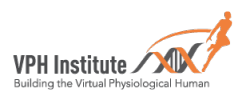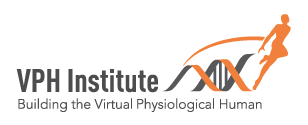Workshops
Detailed overview of all workshops at the Conference:
Workshops
Detailed overview of all workshops at the Conference:
Avicenna Day (AAD) 2024
Tuesday, Sept. 3rd
09:00am – 17:00pm (CEST)
Avicenna Day is an annual event focused on collaboration, innovation, and knowledge exchange in the field of in silico practice. You will enjoy the vibrant event features, presentations and round-table discussions by leading experts, showcasing the latest advancements in medical research and technology. Participants will explore the future of digital simulations and their transformative impact on medicine, science, and technology.
Empowering Innovation, Transforming Healthcare
Don’t miss this opportunity to engage with in silico leaders: mark your calendar, register today and join us on September 3rd to be an actor of the healthcare transformation.
Registration fee: 100 EUR
In Silico World final meeting: resources for In Silico Trials
Tuesday, Sept. 3rd, afternoon
In Silico World is a four-year collaborative project funded by the European Commission to lower the barriers that slow down the adoption of In Silico Trials, the use of computer modelling and simulation in derisking new medical products. As the project moves to its conclusion in December 2024, the project’s final meeting will be a public event where the consortium will present to the community all the resources (many available in open-access) that we developed to facilitate In Silico Trials. These include validation data collections, resources to assist with regulatory qualification, resources to simplify communication with specific stakeholders, educational resources, resources for scalability and computational efficiency, and resources to find the appropriate business models and understand the ethical and legal aspects. The event will conclude with refreshments served within a showcase where the 11 solutions for In Silico Trials developed in the project will be demoed.
Agenda
13:00 – 13:20 In Silico Trials: a SWOT analysis
Marco Viceconti, Alma Mater Studiorum – University of Bologna
13:20 – 13:40 Validation collections
Frans Van der Vosse
13:40 – 14:00 Regulatory resources
Francesco Pappalardo
14:00 – 14:20 Engagement resources
Liesbet Geris
14:20 – 14:40 Computational resources
Maciej Malawski
14:40 – 15:00 Educational resources
Jos vander Sloten
15:00 – 15:20 Business models
Vicenzo Carbone
15:20 – 15:40 Legal resources
Elisabetta Biasin
15:40 – 16:00 Conclusions
Panel discussion with all speakers
16:00 – 18:00 Showcase of the ISW solutions (refreshments will be served)
Target audience & learning objectives
The event interests all those with a professional or educational interest in In Silico Trials. This includes biomedical engineering and biomedicine students, PhD students in medical technologies, academic researchers, industry experts working in the development and derisking of medical products, medical industry management, specialists in companies developing tools for In Silico Trials, experts in regulatory agencies and notified bodies, experts in legal and ethical issues in computational medicine, and healthcare managers and policymakers.
CompuCell3D
Friday, Sept. 6th, afternoon
Hands-on introduction to using the open-source CompuCell3D modeling environment to construct and execute compact and sharable multiscale, multicellular Virtual-Tissue models.
Multi-scale, Multicellular Agent-Based Virtual-Tissue models built using modeling frameworks like CompuCell3D are versatile tools for exploring the complex interactions between intracellular signaling and gene-regulatory networks, inter-cellular signaling through contact and diffusible signals, and force generation, cell migration and shape change. Among other applications the open-source modeling environment CompuCell3D has been used successfully to build models of vascular tumor growth and therapy, embryonic development, liver and developmental toxicology, lung infection, immune response and anti-viral therapies. This workshop will explore how CompuCell3D can simplify the construction of complex, extensible and reusable Virtual Tissue models. Members of the audience will build and explore models by downloading the software from (www.compucell3d.org) or run it on-line at (https://nanohub.org/resources/cc3dbase4x; free with required registration). .
Speaker(s)
Joel Vanin and Prof. James A. Glazier, Biocomplexity Institute and Department of Intelligent Systems Engineering, Indiana University, Bloomington, IN 47408, USA
Workshop Schedule
Introduction to CompuCell3D—Installing and Running CompuCell3D. Exercise—Angiogenesis simulation.
Principles of CompuCell3D Physics—Cells as spatially-extended computational agents. CPM/GGH Representation of cells, Representation of cell behaviors and interactions as Effective Energies and Constraints. Modified Metropolis Dynamics.
Representing CPM/GGH Models in CompuCell3D Scripts—CC3DML and Python model-specification basics.
Representing and solving complex networks in CompuCell3D. Loading network models into individual cells, specified in SBML, CellML, Antimony or MaBoSS. Coupling subcellular models between cells. Exercise—Cell-Cycle models.
Exercise—Exploring the interaction between subcellular networks and dynamic spatial organization. Building a simulation of Delta-Notch intracellular and juxtacrine signaling. Coupling to Cell-Cycle Models.
Introduction to chemical fields, diffusion, decay, secretion, absorption.
Coupling cells to chemical Fields. Exercise—Chemotaxis and nutrient-limited growth
Compartmental Cells and Links—Building Epithelia and Spatially Complex Cells
Using CompuCell3D as a Callable component in complex modeling workflows
Principles of Model Building and Debugging
Audience
Anyone interested in multicellular Virtual-Tissue modeling or in coupling network models to cell behaviors and dynamic spatial organization. Background: Some experience with basic Python programming helpful.
Learning Outcomes
Ability to use CompuCell3D to design, execute and explore Virtual-Tissue simulations integrating cells, networks and external chemical fields.
For more information: see https://www.compucell3d.org or contact jaglazier@gmail.com or joelvanin@gmail.com.
After Workshop Support: After the workshop we provide support for user’s further model development.
Computer Requirements
Any Windows or Mac computer. CompuCell3D is open-source and free. It also runs on many LINUX deployments (see www.compucell3d.org for details). CompuCell3D can also be run in a browser-based deployment on the nanoHUB public servers without a local installation.
Public and Patient Involvement - CANCELLED
This workshop has been cancelled.
Modeling Software Platforms
Tuesday, Sept. 3rd, afternoon
Introduction to Tellurium and Related Tools for Systems Biology Modeling
This workshop session is designed for systems biology modelers who wish to leverage the capabilities of Tellurium, a Python-based modeling environment. Participants will be introduced to the basics of Tellurium, including its installation, key features, and applications in systems biology. The session will cover essential concepts such as model construction via the simple Antimony model description language, simulation, and analysis using Tellurium’s intuitive syntax and integrated tools. Attendees will learn how to create models using SBML (Systems Biology Markup Language) and perform time-course simulations, and steady-state analysis. The tutorial will also delve into more advanced topics, such as model fitting, sensitivity analysis, and network visualization. By the end of the session, participants will have hands-on experience in building and analyzing systems biology models, enabling them to apply these skills to their research projects. This session is suitable for beginners with no prior experience in Tellurium, as well as for more experienced modelers looking to enhance their toolset. Some experience with Python is required.
Organizers
Herbert M Sauro, Lucian Smith (University of Washington, Bioengineering, Seattle, USA)
Target Audience
VPH community and modelers in general (keywords: systems and synthetic biology modelers)
Agenda/ Learning Objectives
By the end of this tutorial, participants will be able to:
1. Install and Set Up Tellurium:
– Successfully install Tellurium.
– Navigate the Tellurium environment and its key features.
2. Understand Core Concepts of Systems Biology Modeling:
– Understand how biochemical network models are built.
3. Construct and Simulate Models:
– Create models using Antimony and generating the Systems Biology Markup Language (SBML).
– Execute time-course simulations to analyze dynamic behaviors of biological systems.
4. Perform Model Analysis:
– Conduct parameter scans to explore model behavior under varying conditions.
– Execute sensitivity analysis to identify key parameters influencing model outcomes.
5. Advanced Model Analysis:
– Examine the dynamic stability of some key model configurations.
– Draw network models using the SBML standard and annotate the diagram
6. Describe additional third-party tools that modelers can add to their toolbox
– Recommendations for parameter fitting
– Web-based tools such as makeSBML and the Antimony Web annotation tool
– Network drawing tools such as Alcuin
ASME V&V 40 training
Friday, Sept. 6th, afternoon
Building on the success of training sessions at past VPH meetings, key members of the ASME VVUQ40 subcommittee will offer a four-hour training session on the V&V40-18 standard, ‘Assessing Credibility of Computational Models through Verification and Validation: Application to Medical Devices’. This standard was developed through close collaboration between medical device developers, regulatory agencies, and other device industry stakeholders, and provides modelers in the medical device industry with a framework for establishing model credibility requirements.
The training session will be facilitated by Jeffrey Bischoff (Zimmer Biomet; chair, VVUQ40), Payman Afshari (Depuy Synthes; co-vice chair, VVUQ40), Shiny Martis (Voison Consulting Life Science; member, VVUQ40), Walter Ocampo (Straumann; member, VVUQ40), and Brent Craven (US Food & Drug Administration; member, VVUQ40). The course will provide an introduction to key concepts of the standard including question of interest, context of use, model risk, and credibility. These concepts will be illustrated through the use of several specific medical device examples, providing the opportunity for spirited interaction between course faculty and registrants. Further, current activities within the ASME VVUQ40 subcommittee will be summarized, in recognition of gaps in the standard that have been realized since its release in 2018.
All registrants are encouraged to access and read the standard in advance of the training session.
Tools for implementing the virtual human twin
Friday, Sep. 6th, afternoon
We have the ambition of developing virtual human models for clinical applications, both for populations (such as in virtual clinical trials) and for individuals – the so-called ‘Virtual Human Twin’, or VHT, which is often linked with continuously updated data from implantable and wearable devices. Along with many others, we are particularly interested in the development of virtual human models that are based on multiscale biophysically-based models that incorporate physiological function from the molecular level to the organ and organ system level in order that they can interpret clinical measurements from genetic testing, blood biomarkers, clinical imaging and physiological function testing. This is a huge undertaking that requires global collaboration and coordination. The European EDITH project, the New Zealand 12 Labours project, and the NIH funded SPARC portal are all contributing to this global effort. The goal of this workshop is to showcase plans and progress towards developing software tools, computational models, devices, datasets, and clinical applications to support these initiatives.
Organisers
Peter Hunter, David Nickerson, Prasad Babarenda Gamage, Greg Sands (Auckland Bioengineering Institute, University of Auckland, New Zealand)
Target audience
VPH community (keywords: multiscale modellers, digital twin developers and users, wearable device and clinical applications)
Agenda/Learning objectives
In the first part of the workshop, we will lead introductory discussion sessions to ensure all attendees are given a common starting point from which to launch into the examples and tutorials. We will discuss how the standards, tools, and practices used across these projects are being developed and could be applied in your projects. Throughout the discussions we will endeavour to point to the specific tools being used and where the capability is available via API or service for integration into other tools. In the second part, attendees will be encouraged to pick and choose from the range of guided tutorials that will be available in the following sections and work their way through the material on their own or in groups. We will provide guidance on specific pathways through the tutorials that aim to address specific use-cases, and instructors will be on hand to advise and discuss. The available instructors will include expert software developers and researchers.


